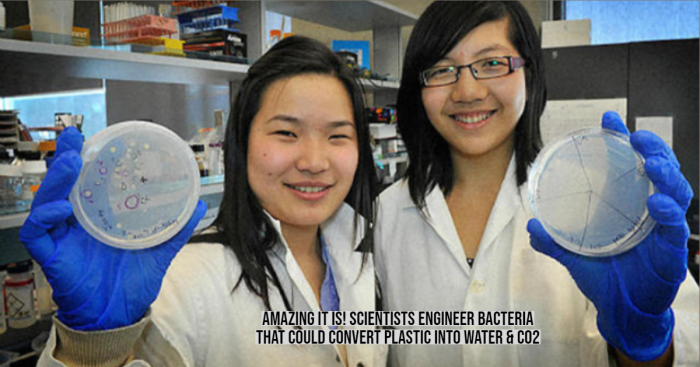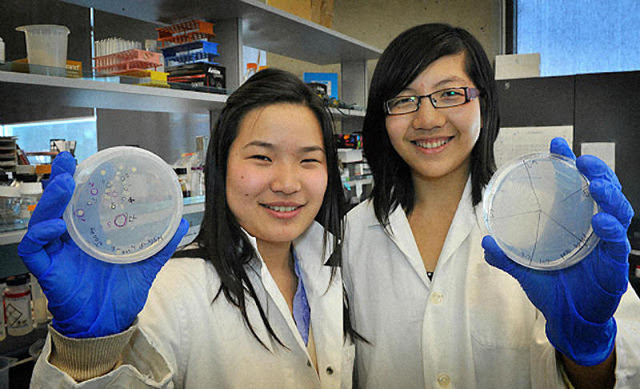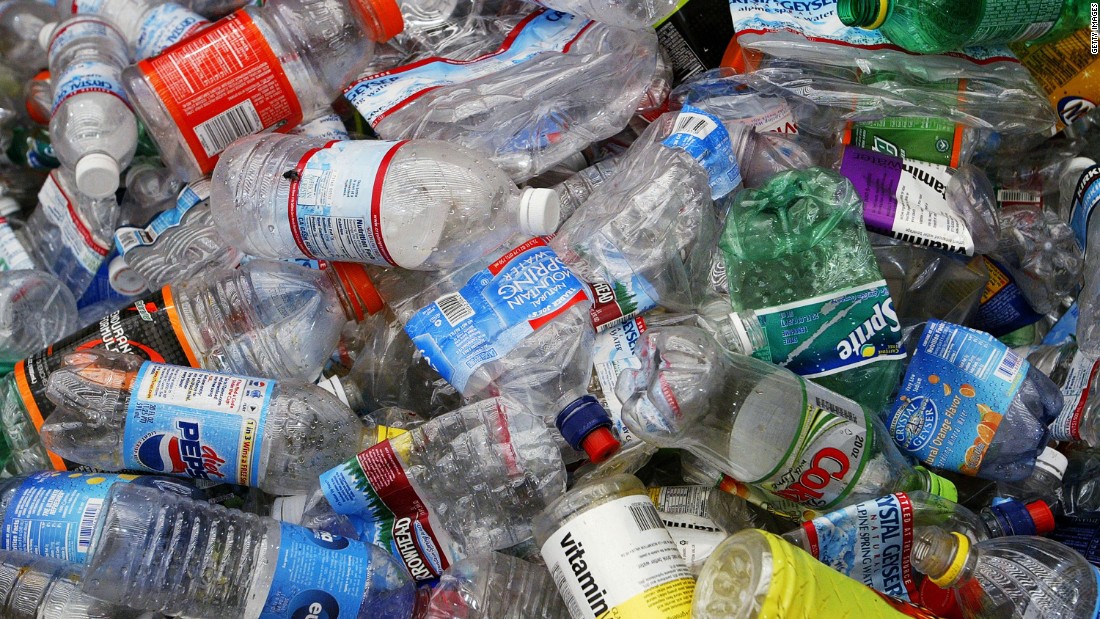Young Scientists Develop Bacteria to Stop Plastic Pollution! Know How
To stop plastic pollution, two students engineered a bacterium that could transform plastic into usable compounds. Read the full story here.

There's no denying the fact that the pollution in the oceans is not only threatening the lives of marine creatures, but also creating problems in human lives. The latest research speculated that there would be more plastic in the ocean than fishes by the end of 2050.
While a guy from Arizona has started Trashtag Challenge to make the environment clean, two students have discovered a method to convert plastic into useful compounds and water.
How They Developed Bacterium That Transforms Plastic into Useful Compounds
Miranda Wang and Jeanny Yao who have been working on their project for years said they developed a bacterium that could chemically breakdown plastic polymers. Finally, their product is reaping benefits. They have a way of recycling plastic pollution into useful compounds.
Do you want to know how they did this? They used genetically engineered bacteria to break polymers such as polyethylene film to turn plastic into more valuable products.
What’s amazing is the duo has received all the rights for the product and even secured funding of four hundred thousand dollars to create a product at the age of twenty years.
They’re the Youngest Ever to Win Perlman Science Prize

The duo has won five prizes for their innovation and became the youngest ever to win the Perlman science prize. They became famous overnight because of this bacterium that can convert plastic into the water. Moreover, this technology can also be used for creating raw materials for clothing and cleaning the beaches.
What do you think- is it possible to stop people from using plastic? The same question came in their mind. Miranda said –
“It is practically impossible to make people stop using plastic, we need technology to break the material, and everything becomes biodegradable.”
The bacterium is developed into two parts where the plastics are dissolved, and enzymes are catalyzed. These elements are then covered in a biodigester station, where they function as if they are the leftovers of any food. You will be surprised to know that this process runs only for 24 hours and converts plastic into the water.
The modified bacteria dissolve plastic into water and CO2. They believe that they can turn the plastic crisis into a great opportunity and disrupt the textile industry.
You can check more details about their project BioCellection here. (15.1)
The Story Behind this BioCellection Project

Unlike most of the people who have concerns about global warming but does not take any action to stop it, these girls took the matter seriously and developed the solution.
Each year, we produce over 400 MM tons of plastic, and approximately 80-90% ends up in landfills. The conversion of plastic into usable material is challenging because currently, it is not feasible and economical.
Today, we do not have great conversion technologies to enhance product value. Ultimately, global warming and plastic pollution is threatening the safety of wildlife and food exchange of over 4 billion people.
According to a study, plastic accumulation is harmful to marine life. The plastic leftovers have been found in the stomachs of whales and turtles. The type of plastic used in bottles is lightweight and durable, but it is resistant to biodegradation.
This is not the first time scientists worked on the conversion of plastics into usable materials. In 2016, the Japanese team from Keio University and Kyoto Institute of Technology run by Shosuke Yoshida collected over 200 PET contaminated samples, which include wastewater from plastic bottle recycling site.
Then they tested the microbes to see if they were eating the PET (polyethylene terephthalate). It was discovered that there are bacteria responsible for degrading PET. The species was named as Ideonella Sakaiensis. The test proved that the species uses two enzymes to break the PET.
Even after doing research, and finding that particular bacteria is responsible for eating plastics, it was not clear how and whether it will stop the plastic accumulation in the region.
Now, Miranda Wang and Jeanny Yao have developed a bacterium to stop plastic use. I think it is a great innovation! Let us know more about their vision and how can you buy this product.
Their Vision and Idea Behind the Project

The project tackles plastic pollution one step at a time. They started this with polyethylene and polystyrene films, which are the major cause of pollution.
The goal is, to recycle the mixed & contaminated plastics that at present cannot be recycled into usable products. By coupling synthetic biology and chemistry, the plastic would break down into building blocks, and then converted into other materials.
How Can You Buy This Product?
No doubt, their innovation is amazing, and people would love to buy this product. Sadly, their product is not available in the market currently, but it would be commercially available in the coming two years.
Watch How Jeanny & Miranda are Helping Restore our Oceans with Biotechnology:
Final Words
What do you think of this innovation? Isn’t it a great step by these students to protect our environment?
Do you have any other idea about how you can stop the use of plastics? If so, share your views below.
Popular Posts
12 Amazing Ghetto Cars That are Perfect for Driving on Paved & Gravel Paths
Ghetto cars are the low-end cars people leave off on a highway or street. Here are the stylish versions of such cars that are a choice of the next generation.
Still Unfold
Amazing Black Hawk Helicopters: Design, Features & Facts
The Sikorsky UH-60 Black Hawk is twin engine, medium lift, and four-bladed helicopters manufactured by Sikorsky aircraft that ha...
Augustus Perez
5 Futuristic Jets We’re Waiting to Come Into Reality
Technology is advancing at blazing speed in the 21st century. These are some of the revolutionary futuristic jets that could revolutionize air travel.
Ethan Stephans








